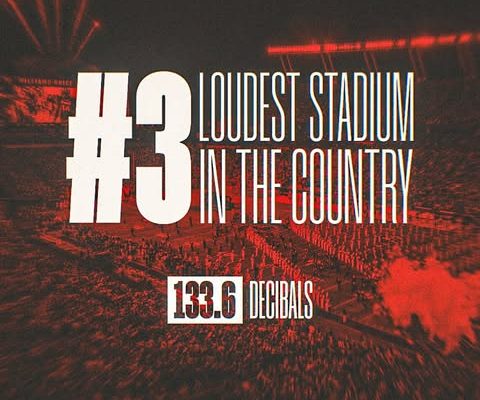EA Sports has introduced a new feature in its long-awaited College Football 26 video game that has instantly ignited conversation among fans and players alike. Dubbed the “stadium pulse” metric, the new addition is designed to simulate the impact of crowd noise and fan energy on visiting teams in one of the most immersive representations of college football ever attempted in a video game. Among the list of the toughest places to play, Williams–Brice Stadium, home of the South Carolina Gamecocks, has been ranked No. 16—a placement that aligns closely with how fans and analysts have historically viewed the raucous Columbia venue in real-life college football lore.
The “stadium pulse” feature works by factoring in various elements that EA Sports developers argue contribute to home-field advantage. This includes decibel levels based on historical data, win-loss statistics in home games, architectural design of the stadium, student section placement, and even traditions specific to each school that have grown legendary over the decades. In the case of Williams–Brice Stadium, the algorithm appears to have captured a blend of intimidation and enthusiasm that the Gamecock faithful bring week in and week out, particularly during night games.
Williams–Brice Stadium’s position at No. 16 on the list has sparked discussions among college football diehards, particularly those in the Southeast, where football is treated with religious fervor. South Carolina fans have long maintained that their stadium offers a uniquely challenging environment for opponents, especially under the lights when the crowd is in full voice and the famous “Sandstorm” rally song turns the arena into a frenzy of white towels and deafening roars. EA Sports’ acknowledgment of this fact is being taken as long-overdue validation for a fanbase that has often felt overlooked in the national conversation about college football’s most intimidating atmospheres.
The simulation aspects of the game have raised the bar in terms of realism. Not only does crowd noise affect a quarterback’s ability to hear audibles at the line of scrimmage, but it also contributes to false starts, dropped passes, and miscommunication among offensive players. With Williams–Brice registering such a high stadium pulse, players taking the field there in the game will have to deal with the same nerves and distractions that real-life visiting teams have cited as major challenges. According to EA Sports lead developer Brian Murray, the intent is not just to pay homage to traditions but to force gamers to “strategize under pressure, just like in real-life college football.”
The decision to include this metric wasn’t made lightly. EA Sports reportedly conducted site visits, interviewed players and coaches, and analyzed thousands of hours of game film to determine which venues created genuine disadvantages for opponents. At Williams–Brice, they were struck not only by the volume but by the synchronization of fan activity and the electricity of specific moments, like the pregame entrance and fourth-quarter build-up. Even architectural quirks—like the stadium’s enclosed end and concrete structures that trap and reflect sound—contributed to its ranking.
The reception from South Carolina alumni, players, and fans has been overwhelmingly positive. Former Gamecock quarterback Connor Shaw commented on social media that the ranking was “spot-on,” recalling how opposing quarterbacks often struggled to make even basic play calls when the crowd reached peak intensity. Current players have also embraced the honor, with several posting gameplay clips and thanking EA Sports for “getting it right.”
While No. 16 might not place Williams–Brice at the very top, its inclusion among the nation’s elite venues marks an important moment in terms of national recognition. It shares the list with iconic stadiums like LSU’s Tiger Stadium, known as “Death Valley,” Ohio Stadium in Columbus, and the Swamp at Florida. These are venues historically given top billing in video games and media coverage, and now, thanks to the data-backed design of “stadium pulse,” Williams–Brice sits in their company not as an afterthought, but as a legitimate peer.
What’s more, this ranking serves as a recruiting and morale booster. For a program that has often fought to distinguish itself in the ultra-competitive SEC, being known as one of the hardest places to play could influence recruits who want to experience playing in front of passionate fans and making an impact in a venue where their presence truly matters. It also cements the relationship between fan loyalty and program identity—something that has always been strong in Columbia, but now has a national spotlight.
Interestingly, the feature also raises new questions about how video games are increasingly shaping public perception. While fans of other schools have taken to online forums to debate the fairness of their own stadium’s rankings, South Carolina fans have used the moment to amplify their traditions and experiences. Videos of tailgates, game day entrances, and post-game celebrations have flooded social media in what feels like a digital campaign of cultural pride. The pride in place is more than aesthetic—it’s being coded into the very structure of how college football is digitally represented to the world.
The feature’s realism has also impacted gameplay mechanics in deeper ways. For instance, offensive linemen in the game are more likely to false start when the “stadium pulse” reaches its peak level, especially if they’re freshmen or redshirt sophomores playing their first road games. Quarterbacks might experience erratic snaps or incorrect hot routes if the play clock is winding down in a loud stadium. Even kickers may have to deal with pressure that slightly alters their accuracy bar, making last-second field goals more intense when the stadium is thumping.
All of these features add layers of strategy and realism, and in turn, elevate the importance of playing at home or trying to survive the road gauntlet. For fans who have always insisted that certain stadiums could “win a game” on their own, EA Sports’ inclusion of the “stadium pulse” metric serves as a kind of empirical validation. This adds legitimacy to long-held narratives and transforms them into quantifiable truths within the gaming universe.
In broader terms, this ranking of Williams–Brice could not have come at a better time for South Carolina football. With a younger roster and high expectations for the upcoming season, both in real life and in the game, having that extra home-field intimidation factor could symbolize the edge needed to turn the tide in close matchups. It also reinforces the Gamecocks’ brand as one built on community, energy, and unshakable support from the fans. That message, now integrated into the very DNA of College Football 26, extends far beyond the console.
There’s also an emotional element that goes beyond the data. For lifelong fans who have spent years attending games, braving intense heat or freezing temperatures, and screaming until their voices were gone, this ranking is a kind of tribute. It says that their effort mattered. That the energy they brought to the stadium didn’t just uplift their team but became part of a legacy now recognized in digital form. EA Sports may have used algorithms and sound models, but what they really did was acknowledge passion.
As the release date for College Football 26 draws nearer, all eyes will be on how each school’s stadium actually feels during gameplay. If the early previews are any indication, Williams–Brice will deliver an authentic experience that resonates with longtime fans and new gamers alike. Whether it’s stopping a fourth-down conversion, forcing a key fumble, or simply watching an opposing quarterback lose his composure, players will be reminded that Columbia, South Carolina, is no easy place to visit—digitally or otherwise.
The broader impact of the “stadium pulse” feature will take time to measure. But for now, it has sparked a renewed sense of pride among South Carolina fans, added another layer of realism to college football gaming, and perhaps most importantly, it has elevated Williams–Brice Stadium to the pedestal it has long deserved. The heartbeats of the crowd, the rhythmic pulsing of white towels, the defiant echo of “Sandstorm” through the night air—it’s all there. And now, it’s finally part of the game.



